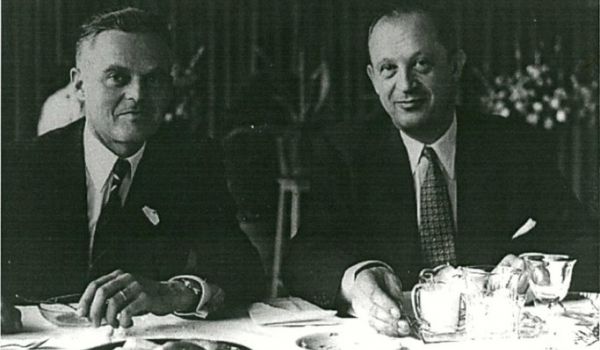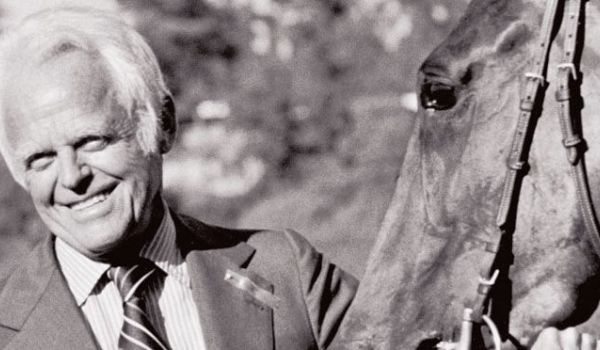THE AMAG STORY
Heinz Nordhoff was quick to establish himself in his role as the General Manager of Volkswagen and had a focussed plan for the future of VW. Having made an immediate and amazing increase in production of the Beetle, nurturing and building on the export markets Major Ivan Hirst had put in place was of great importance. The export markets VW had recently secured around Europe were recovering from the devastation of war. Obviously, this was also the case for Germany and therefore the 4400 Deutsche Marks needed to buy the entry-level Type 1 was only within the reach of a minority. To give you a better idea, 4400 DM in 1949 would equate to around 16,500 €, $19,750 or £15,000 today. However, Nordhoff realised the VW offered a perfect basis for enhancement and would be easy to create an upmarket model. Offering a more appealing specified model would give buyers a choice of two cars and therefore twice the chance of an important sale. Nordhoff embraced this opportunity in 1949 by introducing the Export model Beetle with gloss paintwork, exterior body enhancements and more salubriously upholstered and appointed interior. At introduction the new Export Beetle carried a price tag of 5400DM and if you wanted to have a sunroof that would add 300 DM to the bill. The more costly the cars were the same under the skin, but helped proved popular and important foreign currency would soon be accrued by Volkswagen… The Sky’s the limit. Looking outside of the home market, Nordhoff planned the introduction of two additional Type 1 Export based models to the Volkswagen range. The Type 14A Hebmüller Roadster Cabriolet was first of the new models. Nordhoff signed off the 2-seater convertible based on the Beetle during the April 1949. The car was to be produced outside of VW by Karosseriewerke Joseph Hebmüller Söhne of Wülfrath near Wuppertal. It is common knowledge VW placed an initial order for 2000 units was made to Hebmüller, but I think you will find the following information very interesting… Nordhoff had already secured a large export order in February 1949! The order shows Nordhoff wasn’t actually making a big gamble by putting the Hebmüller VW into production, although history was to prove total production would only ever realise figures around the amount of the first order. Walter Haefner of AMAG, Switzerland, was the man who placed the order. Haefner founded his company, AMAG Automobil-und Motoren AG based in Buchs, Switzerland, in 1945 and had initially imported Triumph and Standard cars from Britain. He saw potential in the Volkswagen and approached the British Army, in control of the VW factory at the time, and negotiated a contract to be the official Swiss VW importer on April 29th 1948 within a matter of weeks of signing the contract he received his first delivery of 25 VWs. AMAG would go on to become a very important affiliate of Volkswagen by the early 1950s as Switzerland offered a unique opportunity to the company. Referred to by the Third Reich a das kleine Stachelschwein (The Small Porcupine), somehow Switzerland had survived the war without a planned German invasion ever being carried out. The country remaining independent was down to it making economic concessions to Germany whilst putting forward static military deterrence. Post war, this resulted in a greater number of the Swiss population afforded with the ability to purchase new cars. By the end of 1948, Haefner had delivered 1680 new Volkswagens and the car was soon to build up a very positive reputation as a reliable, robust machine. The countrywide network of 50 AMAG service and parts agents assured owners also found their VW was easily maintainable. Falling into place. The background story on the part Walter Haefner played in terms of the introduction of the new VW Type 14A Hebmüller should fall into place when you discover what happened between his order being placed in February and Nordoff authorizing production in April. Having placed the order Haefnerh wanted to promote the new Hebmüller and had the perfect stage in mind to do so, the 19th Geneva Auto Salon to be held between 17th and 27th March. There were two problems, the cars had not yet gone into production and Volkswagen was not promoting itself with a stand at the show! Haefner, Nordhoff and Hebmüller agreed the new Roadster should be debuted and provide a pre-production prototype to be displayed by AMAG. The car was the fourth and final pre-production car and was actually built at Wolfsburg in design and prototype department workshops headed by Rudolf Ringel. Haefner proved to be right to debut the new car in Geneva, as sleek Roadster lines netted orders from successful Swiss buyers before series production commenced in June 1949. AMAG had ordered 25 units and all were presold, therefore 40 more cars were ordered and again all sold. By the end of 1950 a further 50 Hebmüllers were ready to be transported from Wülfrath to Zurich by train. End of the line. Although Nordhoff had proven there was a market for the Hebmüller Beetle, and thanks to Haefner’s AMAG, Switzerland had imported, sold and delivered an impressive number of units in 1950. Sadly, as is well documented, Hebmüller suffered a fire at its factory on 23rd July and was not insured. The cost of repairing the factory, coupled with the economic climate at the time meant the company was forced to file for bankruptcy at the end of 1950 having produced just 696 cars. Amazingly, 157 cars are known to survive today. Of those registered via this homepage you will find 11 of the 58 examples listed are Swiss. As for Walter Haefner, he not became the only foreign member of the Volkswagen board; he went on to have a number of other successful businesses and became a billionaire. In total, AMAG imported 320637 VW Beetles into Switzerland.
Words & pictures: Ivan McCutcheon


